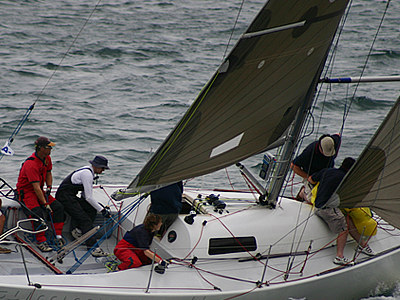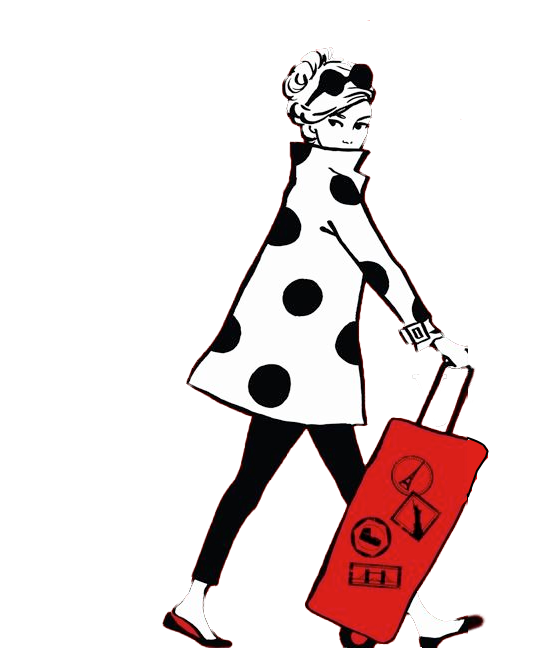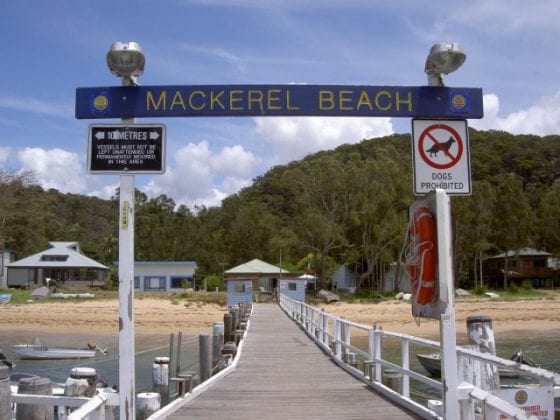If teenagers can sail solo around the world, why not us? American Holiday Goddess Julie Moline discovers the best US options for landlubbers.
When I was a girl, I read an article in National Geographic that haunts me to this day. It was a story about Robin Lee Graham, a teenager who, in the summer of 1965, sailed around the world, alone.
Never mind that I lacked the courage to sneak a cigarette behind the garage, and had yet to set foot on a boat. I was determined, with the passion of a 10-year-old, to one day sail around the world myself, too.
Forty-odd years later, the closest I’ve gotten is sailing throughout the Caribbean, with a professional crew doing all the work. Still, the idea of being a sailor beckons. That’s why the idea of sailing school, preferably at some exotic location, is so compelling. There, you get to combine the fun of learning a new skill with the R&R of an adventure vacation . . . and perhaps test the viability of the dream of a sailor’s life.
Here are some noteworthy learn-to-sail programs for beginners.
•Seadog, whose school is in the British Virgin Islands, begins every morning with the lesson of the day before students set sail for top snorkelling destinations and various points of interest (including Norman Island, the reputed locale of Treasure Island; the Bitter End Yacht Club, and the reef island of Anegada) to practice new skills. This program is heavy on the fun—lots of grilled lobster, evening-time clubbing, dancing under the night sky—and still wins top honors from the American Sailing Association.
For info: www.seadogsailing.com
• Sistership, on the island of Tortola, offers a variety of programs for women, couples and families, all in a relaxed, supportive environment. The women’s only programs are self-explanatory; couples courses teach new sailors how to best work as an effective team; the family courses provide a safe, fun way to introduce kids to the world of sailing. All are “liveaboard” courses.
In a typical week the Sistership vessel visits up to seven islands, mooring in a different harbor each evening. In addition to the regular curriculum, which includes boat handling under sail and power, navigation, anchoring, docking, boat systems and safety procedures, there is time to swim, snorkel, beachcomb and stargaze.
Sistership is a member school of the American Sailing Association (ASA), meaning it has met rigorous, internationally recognized educational standards. It offers various ASA certifications, including basic keelboat sailing, basic coastal cruising, bareboat chartering, multihull sailing and coastal navigation. For info: www.sailsistership.com
• The Annapolis Sailing School, which has graduated thousands of sailors, many of whom return for advanced courses, offers vacation courses in three categories—basic, cruising, and advanced—-and within each category provides courses of varying duration to accommodate individual vacation plans and schedules.
Three basic courses last two, three or five days. Each is built upon the same foundation of classroom instruction covering the theory and principles of sailing, but varies in the amount of time spent practicing the skills developed in the classroom.
Students have their choice of two “campuses”: the superb sailing waters of the Chesapeake Bay in Maryland and Tampa Bay in Florida. The Florida branch is open year-round and offers a variety of beginner’s, advanced, liveaboard and Kidship programs. For info: www.annapolissailing.com
• In San Diego, Jworld’s five- or six-day Learn to Sail program helps you get started if you’re an absolute beginner, or builds upon sailing knowledge gleaned elsewhere. The course begins with basic boat-handling and nomenclature and ends with flying down the bay under spinnaker. There’s also a five-day Racing 1 course, a program that covers race boat handling as well as basic strategy and tactics. Taught aboard J/80s, the well-regarded training vessels (Sailing World rated them as easier to handle, less intimidating, safer and better suited for sailing offshore than other sport boats tested), there are never more than four people aboard each boat plus an instructor.
Sailors in San Diego can expect roughly 300 perfect sailing days per year. The daily sea breezes rarely blow harder than fifteen knots or fewer than eight knots, and temperatures rarely drop below 65 degrees, even in winter. For info: www.jworld-sailing.com.
• Offshore Sailing School offers five- and seven-day programs culminating with certification, and has locations in the British Virgin Islands, the New York area and Chesapeake Bay.
Each day includes detailed classroom and on-water instruction, beginning with the basics (terminology, knots, rigging, sail trim and sail shape) before learning tacking and jibing, maneuvering, navigation, right of way rules, etc. Students sail on the Colgate 26, the most frequently used training sailboat in the U.S. No more than four students are assigned to each boat, insuring intense individual instruction and the assignment of some important role to play at all times. At the course’s end you and your crew chart a course and go for a sail on your own.
• Prefer learning how to sail on a lake rather than the ocean? Superior, Wisconsin-based Sailboats Inc. weekend certification programs for newbies at various locations along the Great Lakes, including Chicago, Thunder Bay, Ontario, and several small towns in Wisconsin. No matter where the location, a lakeside classroom session on the first morning is followed by two and a half days of hands-on boat handling with three other students on a 30′ cruising sailboat. For info: www.sailboats-inc.com.
Photo: JustinTabariPhoto





